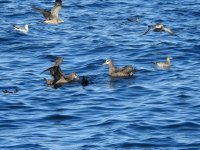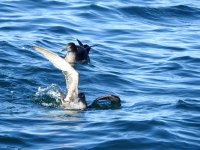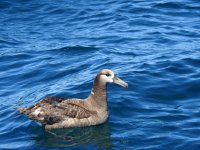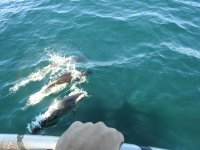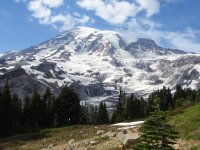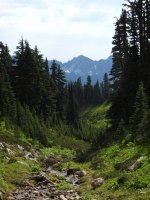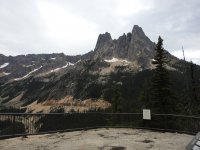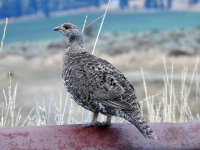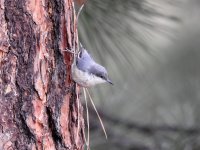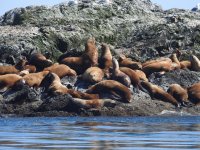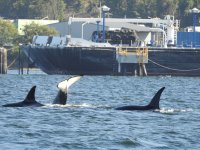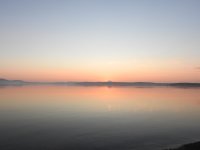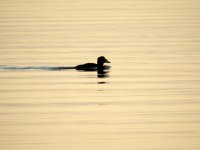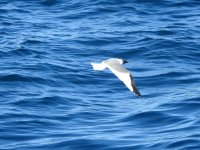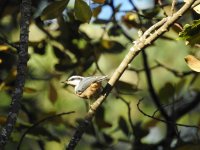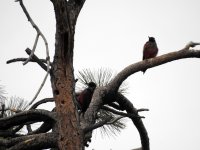lgonz1008
Well-known member

When I first put together this family trip, I gave it this over-the-top title to get them excited and I'm glad to say this state lived up to the expectations! We did a 9-day trip through the state in order to visit the 3 National Parks that call the state home along with the San Juan Islands. Overall, the trip was a success with over 1,500 miles of road covered, we recorded 155 bird species and 20 mammal species, plus a few other interesting creatures. It must be said this was a family trip planned by a birder, so while I did include a few places only a birder could love, most of the trip was made under the basis that casual nature-loving relatives and friends can enjoy it just as well.
Some of the trip highlights include just the fact we had perfect sunny weather every day of the trip, so no gloomy skies, showers or heatwaves (they all seem to have come into the state the week after we left); bird wise I got 25 lifers including a menagerie of seabirds that the ship's captain was glad to say we had the ultimate experience of the season, seeing both Sooty and Dusky Grouses with chicks from the road and a cooperating Lewis's Woodpecker family one morning around Winthrop; food wise, outside of the Ashford (town that's the entrance to Mt. Rainier), the food was some of the best I've had in any trip, whether it was in a restaurant or fruits and sandwiches bought in a store for the long driving days.
Detailed Itinerary:
Detailed Itinerary:
- August 5 (Flight and drive to Westport)
After an early morning flight from Miami to Chicago and from there to Seattle, we arrived in the state little past 1PM and after quickly picking up the rental car, a brief stop in the grocery store for some water, we were on our way to the coast while eating some Dairy Queen in the car to make up the lost time since traffic was awful to put it mildly until we were long past Tacoma. We arrived to the Mariners Cove Inn around 7 for check-in and while putting our stuff away, I noticed some of the first birds of the trip, including a singing Swainson's Thrush, a pair of Song Sparrows, flyover flocks of Barn Swallows and American Crows and the first of many Steller's Jays seen on the trip.
From there we drove to Westhaven State Park to enjoy the sunset over the Pacific and I was given a sobering reminder that gulls are a birder's enemy, especially when you're in the peak hybrid zone of the region! I was eventually able to pick out a few "pure-bred" Western and Glaucous-winged Gulls among the hundreds of hybrids, but outside of those the park provided little else of note except a few foraging Caspian Terns in the waters close to a Brandt's and Double-crested Cormorant colony and a lonesome Common Nighthawk on our way out foraging. Overall, it was time to finish to relax a bit after a long travel day, we had a Safeway sandwich dinner in the room and called it a night.
- August 6 (Westport Pelagic)
As mentioned in the beginning, this was a birder planning a family trip, so of course I was going to make some time for myself to see a few lifers! Today was a trip to take one of the iconic boat trip with Westport Seabirds to see what we could find in the open ocean, as a general disclaimer, if you are even slightly prone to motion sickness, it is highly recommended to take the proper medication or you will experience tough times whenever the boat is still, even on a pleasant day like the one we had (sunny skies, no fog and plenty of wildlife encounters) the waves we big and constant which sadly resulted in my family members who chose to join me (to see some of the marine mammals and albatrosses) to spend most of the trip vomiting even after taking said medication alongside another participant.
With the unpleasantness out of the way, I must say, this was pretty much everything one could hope for when they imagine a pelagic trip and more. After boarding around 5, we were off to the ocean by 5:30 and the lifers began showing soon after! Alongside the hundreds of Brown Pelicans and gulls, we picked out our first Alcids in the forms of Pigeon Guillemot, Common Murre and Rhinoceros Auklet and our first hundred Sooty Shearwaters. From there we were on a fast drive to offshore waters were the gulls and pelicans were replaced by thousands of shearwaters and we soon realized we were in peak Red Phalarope migration as 70% of the birds we saw were of this species as opposed to the usually more common Red-necked Phalarope.
Once we reached the offshore waters in the Pacific county we were briefly greeted by a diving Humpback while and followed soon after by a skua slam where we had all possible members of this family within view in 30 minutes, these of course included Pomarine, Parasitic and Long-tailed Jaeger along with two South Polar Skuas. Alongside the quickly fleeing Cassin's Auklets, we also had our first feeding frenzy as a fishing boat had just finished going through the area and the water around us was filled with our first Black-footed Albatrosses, Northern Fulmars and Fork-tailed Storm-Petrels among the thousands of shearwaters, with Sooty being the most common followed by Short-tailed and Pink-footed Shearwater.
From there we went a bit further out to Willapa Canyon to put some chum out to see what turned in, the arrival was slow since the birds were dispersed following the fishing boats, but while we waited we were greeted with faraway views of Dall's Porpoise and close ups for both Blue Shark and Ocean Sunfish. Eventually when the birds came in we had nearly 30 Black-footed Albatrosses near the boat, alongside amazing close-up views of a breeding plumage Sabine's Gull, a brief encounter with an Arctic Tern that left much to be desired and amongst the faraway moving Leach's Storm-Petrels, we had a brief but solid views to a very early in the season Buller's Shearwater. On the way out we were able to encounter our first of three Tufted Puffins for the day and after midday we were on our way back to shore but the most memorable experience was yet to come.
Normally the way back from every pelagic trip is a slow time without much to see since you already got most of your targets, but this trip we were blessed by a marine mammal bonanza, it began with a Humpback Whale swimming in the distance with Mt. Rainier in the background before one showed up much closer for better views of the tail fluke and finally a third one that did the iconic breaching before going down. Soon afterwards, a pod of 30+ Pacific White-sided Dolphins began playing in the surf being made by the front of the boat alongside 10 Northern Right Whale Dolphins! We had this amazing experience with both species for a period of roughly 20 minutes before both species dispersed, everyone in the ship, including the captain and the guides, were surprised by how cooperative these Right Whale Dolphins were as the species is usually seen briefly and far from the boat. Finally, we had a brief view of a Northern Fur Seal to finish out mammal break and continued our way back to shore.
After an hour and a half we were finally within the inshore waters and by driving slowly close to the jetty we were able to see a few Steller's Sea Lions on the buoys along with high numbers of the inshore Alcids before locating a pair of Wandering Tattlers in the rocks alongside an early Spotted Sandpiper and within the harbor we noticed a single Willet within the 600+ flock of Marbled Godwits in the sandbank and a lonesome Bonaparte's Gull with all of the hybrid and Heermann's Gulls. The last new animal of the trip were the Harbor Seals that spend their lives in these waters while we were counting the species totals for the day.
While the trip was over, I was still on cloud nine, but sadly my family were in the worst case possible, we drank some Gatorade to recover some of the lost electrolytes, before having a shower and enjoying a tasty clam chowder, fish and chips and some ice cream by the pier. It was an early night for all of us since tomorrow was a travel day with some stops within Olympic National Park.
Last edited:







